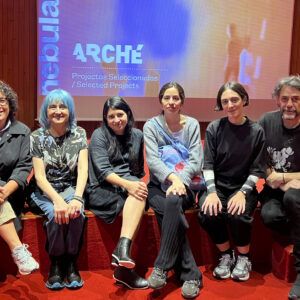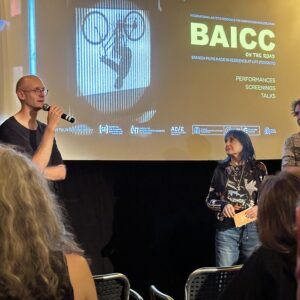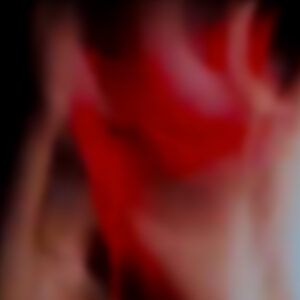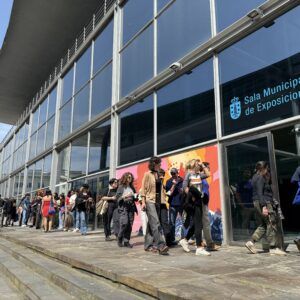Venezuelan artist Valentina Alvarado Matos tells us about the process behind voy raspando la hoja y la voz, part of our Desbordamientos (Overflows) Section, and the importance of collage, the fragmentary nature and permeability of meanings between image and sound in her work.
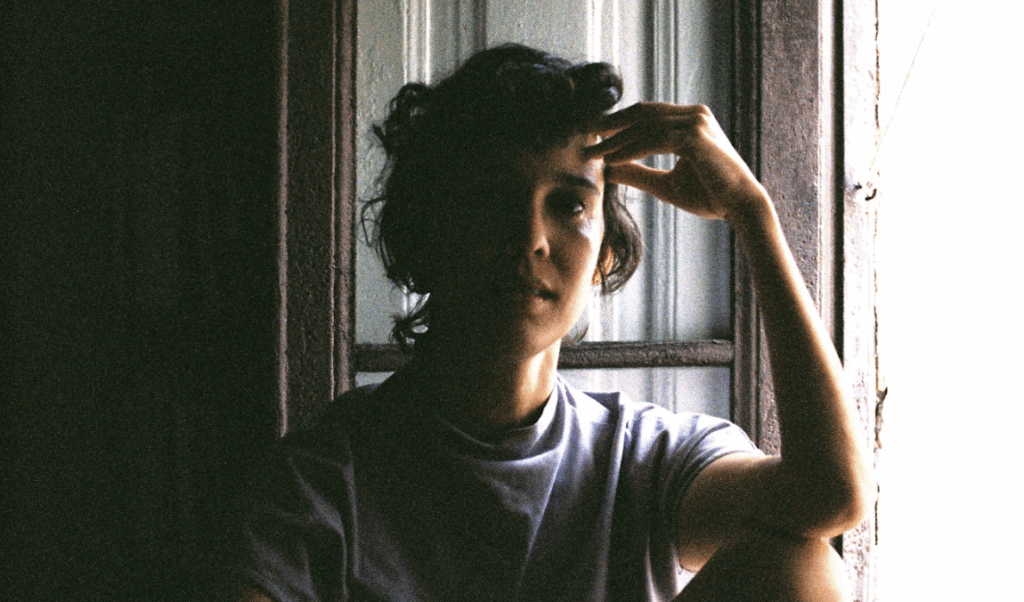
Where does the idea for voy raspando la hoja y la voz come from?
Voy raspando la hoja y la voz has various roots. Firstly, it stems from looking back at images filmed over the past few years; secondly, from a conversation that arose from a dream with Mila, my mother; and thirdly, it’s part of ongoing research into landscape as an archive and sensory experience. I’m interested in exploring how certain images settle down—sometimes on the retina, sometimes in memory—and how, when activated, they bring about shifts that are not only visual but also emotional.
This work connects with others where I think of the moving image as a fragmented body, one that gets assembled from residual things, from what falls outside the shot or what doesn’t get fully revealed. It also dialogues with writing, with that page that gets scratched, like an attempt to find the voice between layers of paper, sound and film.
This work is part of a broader process exploring the relationship between landscape, body and language. I think that re-interpreting personal archives enables us to construct a broken, non-linear timeline, where different layers of experience overlap, perhaps as occurs with memory.
How did the title of the piece come about?
Is “hoja” the leaf of a tree or a page-leaf to write on? The title voy raspando la hoja (“I scrape the leaf and the voice”) came about like a resonance of the act of burrowing, of going inwards, both into the image and into the sound. It’s almost a persistent murmur that repeats itself while I work, suggesting an insistence on finding something between what is said and what gets left unsaid, what is written and what gets erased.
I’m interested in thinking of that “scraping” as an area of friction, a space where the visible and the hidden, what we wish to name and what remains (in the shadows?), rub up against each other. It’s a tentative image, hesitant and untimely, as if the word preceded or followed the image, condensing the complex relationship between body, word and image running through the entire piece.
Sound recordings, as well as the cassette tape loops, take up a significant part of the performance. Can you tell us about the piece’s sound work?
The sound works like an almost tectonic layer that can tense, accompany, interrupt or anticipate an image. This fragmentary side and the collage are not just expressed visually; I like to think of the word “textural”: text and texture intertwined. I’m interested in readings that overlap, understanding the act of reading aloud as a space for trial, error and uncertain outcomes.
I work with voice recordings, atmospheres and texts that I rehearse aloud, together with loops of tape that generate an artificial breathing: a repetition that is always different and deteriorating. These loops came about after collaborating with my friend and musician Dania Shihab; while I accompanied her compositions with image loops, she showed me her cassettes and loops in a joint image and sound workshop, and since then I have explored them in my process.
This insistence on sound is also a way of thinking about memory, about the way an absent image sounds, what rhythm a memory has, and how something is expressed even without a definitive form.
As for the image, it’s a mix of 16 mm recordings made in Venezuela (if I’m not mistaken), and slides. Can you tell us how you’re putting those pieces together?
I work with a mix of 16 mm footage, some filmed in Venezuela and others in Barcelona, along with discarded images from other processes—tests and scraps—and slides that bring in quieter, more contemplative layers, almost like still images breathing alongside the film.
There’s something approaching a collage in this way of fitting together pieces that don’t necessarily belong to the same time or space, but which in assembling them find a common rhythm. This fragmentary logic, almost like a constellation of moments, helps me get the images to engage in a dialogue through the emotional and the symbolic, beyond a specific linearity of time.
What interests me is how the image, when removed from its original context, gets reconfigured and speaks from another place. Returning to one’s personal archive and selecting images is an act of emotional choice: why does this one reappear and not another? As the researcher Suset Sánchez once wrote to me, this separation and re-contextualisation of the personal archive sparks new memories and transforms not only the image, but also the way of thinking about the montage, memory and story.
The performance’s rhythm is also an important part. Is there something like a “story” that you structure it around?
Although there’s no linear narrative, there is an internal structure that enables it to get activated. The rhythm is set by the 16 mm reels with their pauses, the sound passing through it all, and the pauses of the 35 mm slides (some half-frame, fragmented into two images). Through intuition, the montage links images that do not follow a linear time, but are arranged in subtle tones: reds, blues, greens and yellows, to form a narrative that guides this journey.
More than a concrete story, the piece is a collection of gestures, sounds and images that appear with a rhythm of breathing: pauses, holding, and repetitions mark moments. Voice, image and sound come together and interrupt or accompany each other, articulating themselves through poetic associations rather than defined structures. Sometimes the image anticipates the word; others, the word comes first and the image responds like an echo.
I’m interested in that gap, that broken time where fragments connect in unpredictable ways: the visible and the suggested, between what is shown and what is left outside the shot.
The images get activated and emerge as tentative, fragile and incomplete dreams or memories. I hope we don’t demand that the images “comply” or take effect, but rather that they open up and evoke themselves.

